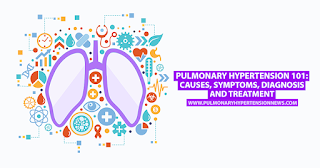Unraveling the epigenetic landscape of pulmonary arterial hypertension: implications for personalized medicine development
Novel PET Approach Identifies Early Signs Of Pulmonary Arterial Hypertension
A new molecular imaging technique -- 18F-FAPI PET -- can detect the first signs of tissue remodeling in patients with pulmonary arterial hypertension (PAH), providing physicians with an early marker for disease progression. This approach has the potential to pave the way for more personalized management of PAH, offering more timely interventions to improve patient prognosis.
PAH is a progressive and life-threatening disease in which the blood pressure in the pulmonary arteries (those that carry blood from the heart to the lungs) is abnormally high. This is often because the structure of the arteries is narrowed or damaged due to tissue remodeling.
"We know that during the remodeling process fibroblasts are activated," said Cheng Hong, MD, PhD, pulmonary vascular medicine specialist at the First Affiliated Hospital of Guangzhou Medical University, National Center for Respiratory Medicine, State Key Laboratory of Respiratory Disease, in Guangzhou, China. "While PAH has traditionally been evaluated through hemodynamic measurements and echocardiography, my colleagues and I sought to determine if imaging the fibroblast activation protein could predict PAH disease progression."
The study included both preclinical and clinical components. In a small animal model, 15 rats were induced with PAH and five were designated to a control group. On days seven, 14 and 21, the rats were imaged with 18F-FAPI PET and hemodynamic measurements were recorded. Changes in 18F-FAPI uptake and hemodynamics over this time frame were compared.
In the human model, 38 patients with PAH underwent 18F-FAPI PET imaging, with right heart catheterization and echocardiography performed within one week to assess pulmonary hemodynamics and cardiac function. Treatment response was also assessed for patients who received PAH-targeted therapy.
Increased 18F-FAPI uptake in the right side of the heart and pulmonary arteries was associated with hemodynamics and cardiac function. Among the five patients who underwent PAH-targeted treatment, three demonstrated reduced 18F-FAPI uptake after receiving a second 18F-FAPI scan, which correlated with clinical improvement.
"The ability to detect fibroblast activation in PAH patients is significant as it could provide an early marker of disease progression, potentially before irreversible structural changes occur," stated Xinlu Wang, MD, PhD, nuclear medicine specialist at the First Affiliated Hospital of Guangzhou Medical University, National Center for Respiratory Medicine in Guangzhou, China.
"At the same time, we found that after PAH-targeted therapy, the uptake of 18F-FAPI in the right heart and pulmonary artery of patients decreased, suggesting the potential reversibility of fibroblast activation in PAH. 18F-FAPI PET could assist clinicians in monitoring the efficacy of PAH-targeted therapies, offering a new tool for personalized medicine."
Hypertension Signs
This is how that glass of orange juice helps you tackle high blood pressureCertain foods liked the packaged ones, which are generally high in sugar or salt, can spike your blood pressure levels. But there are also many foods loaded with potassium, magnesium, and fibre, which can help you bring down your numbers on the BP machine. Yes, we are talking about those luscious oranges here. Know how this fruit can help you.
Early COPD Symptoms
Some of the early signs of chronic obstructive pulmonary disease (COPD) are an ongoing cough, increased mucus, and fatigue. Recognizing these symptoms is important to know whether you need to see a doctor and get tested.
Chronic obstructive pulmonary disease (COPD) is a chronic lung condition that obstructs your airways, making it difficult to breathe. COPD worsens over time and can be life threatening without treatment.
More than 11.7 million Americans have been diagnosed with COPD, according to the American Lung Association. But it's not always easy to tell whether you have it. Some of the symptoms of COPD are similar to those of other conditions. When symptoms first occur, some people ignore them, thinking they're related to something less serious.



Comments
Post a Comment